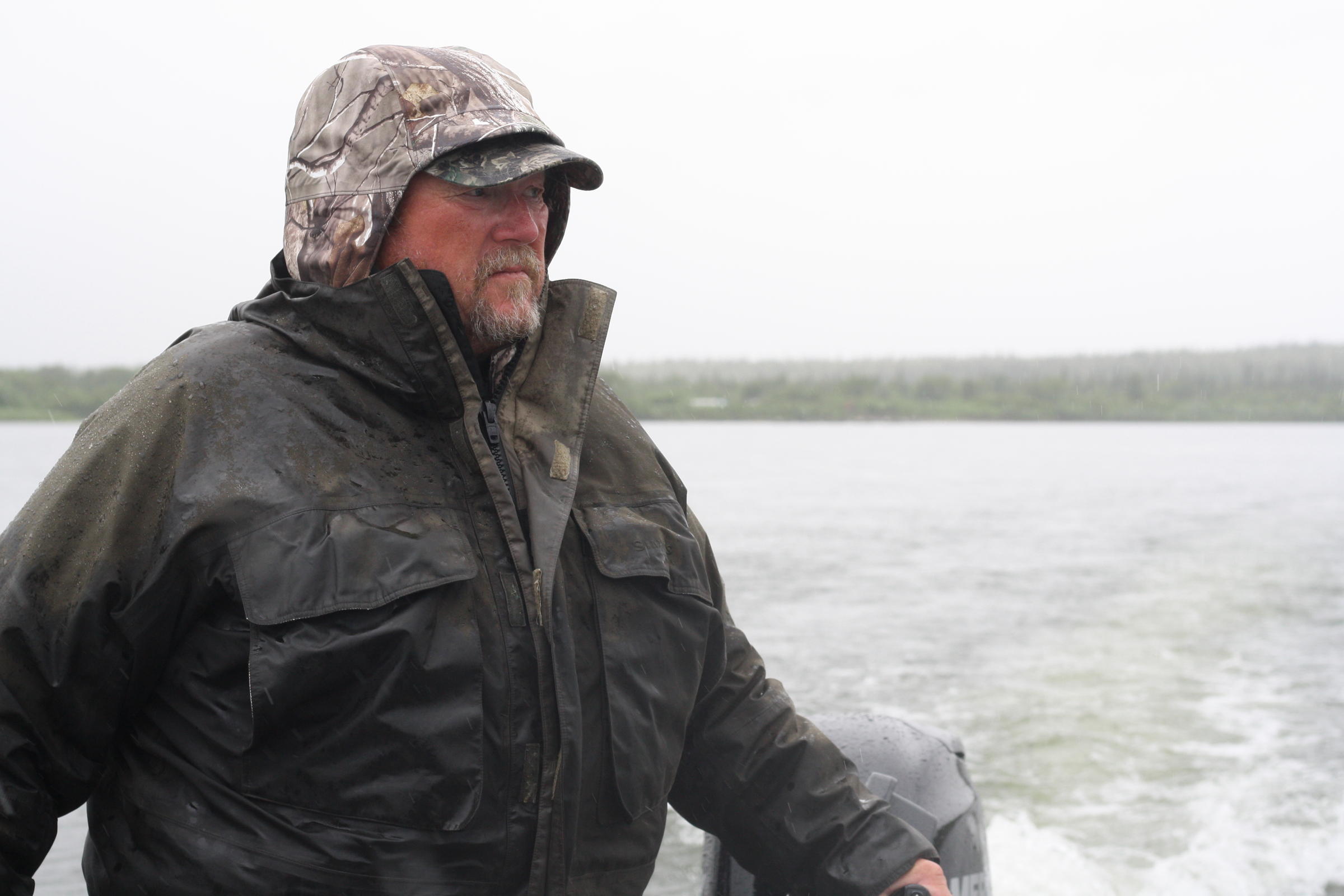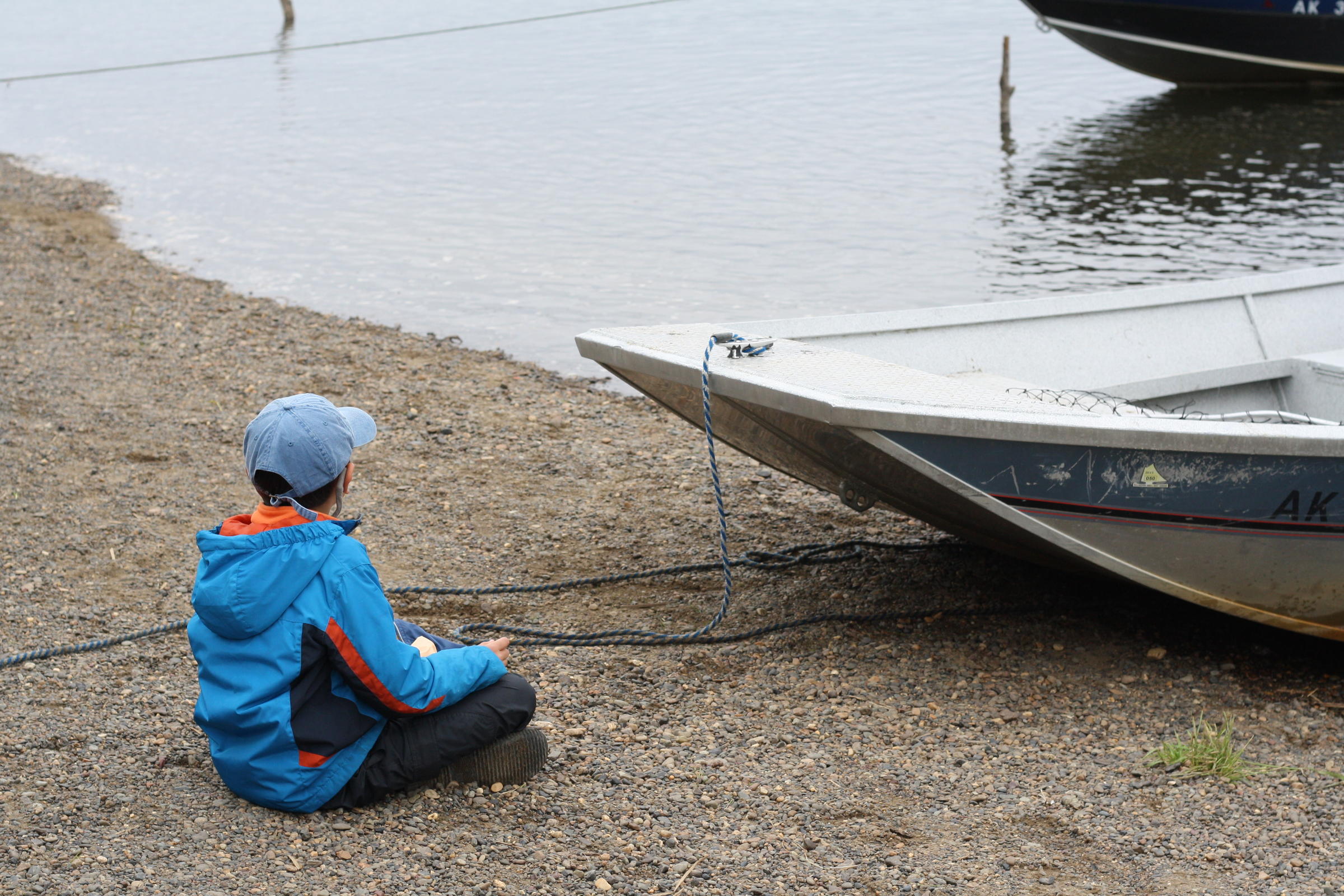
(Photo: Allison Mollenkamp)
In the controlled chaos of Bristol Bay’s commercial and subsistence fishing, it can be easy to lose track of the third group the salmon get to: sport fishermen. They come from all over to fish with guides at camps and lodges along Southeast Alaska Rivers. Those guides are just part of the infrastructure that keeps sport fishing going.
Toman’s King Camp sits on the bank of the Nushagak river.
The best stretch of river for sport fishermen is a boat or plane ride away from Dillingham. For those who fly, they leave from Shannon’s Pond in Dillingham and fly twenty minutes over Bristol Bay and tundra to land on the Nushagak.

Andi Hakanson runs the administrative side of Toman’s. She said the float planes present some challenges.
“I think we can fit 800 pounds on that plane, not including the pilot,” Hakanson said. “And then their bigger plane, the Beaver, is I think 1,500 pounds. But that goes fast. If you have four large guys and then they have bags and they also have a 50-pound fish box each it goes real quick.”
Some clients aren’t too eager about the planes either. Hakanson recalled one regular customer.
“He’s terrified. Yeah, he doesn’t like those little planes and so he flew in last year and it was, there was a windstorm,” Hakanson said. “It was pretty bad. But it was still okay to fly but it was rough so he said ‘Absolutely not. I’m not getting on that plane.’ So he had to get a room in Dillingham and spend the night and we picked him up the next morning and boated him over.”
The boats bring more than people up to camp. All the camp supplies are brought up from Dillingham by boat before the season starts. The shopping, however, started long before that.
“Jeremy and I will shop in Oregon and we’ll put everything up on the barge, all of our dry goods,” Hakanson said. “So stuff that doesn’t spoil. Non-perishables. Lots of canned goods and baking mixes. We were gonna try to put cabbage this year but we forgot. Everything else: paper towels, toilet paper. And we have half, I would say half to three quarters of a container full of stuff that comes up.”
All that food lets the camp kitchen feed up to fifty or sixty people per night. Behind that effort is Pam McClung, who runs a small catering business in Portland. Cooking at a camp up the Nushagak is a little different.
“I’m cutting up pretty much the last of our fresh produce,” McClung said.
With one of their busiest weeks of the short season ending this weekend, they don’t plan to order more.
“We’re really right now on an as needed basis. Just gets very expensive,” McClung said. “So, we got lots of canned goods, we’ve gone through quite a bit of our canned goods. And, so now we’re playing Chopped Kitchen. Which is fine. We’re having fun. So we’ll plan our menu a couple days in advance depending on what we have and then we’ll pull stuff out of the freezer accordingly.”

For all the challenges, the menu is pretty impressive.
“We’re having actually fish, brisket and pork quesadillas and lasagna from dinner last night and fresh apples and we just made brownies,” McClung said.
The quesadillas are the work of the kitchen’s second driving force: Manuel Rodriguez. He’s been cooking at Toman’s for twelve summers and he doesn’t take long to think of his favorite part.
“The cold. It’s too hot in my city. 114 [degrees] every day.” Rodriguez added.
Rodriguez met the camp’s owner, Jeremy Toman, in Mexico. One of his many ventures is a mule deer hunting operation there.
“And then I do moose and brown bears here too. And then I do guiding fishing in Oregon and Washington too. The Mexico hunt is, I’ve done that for twenty years now too. That’s probably one of my favorite things to do. The weather is always nice,” Toman said.
The weather on the Nushagak is a little more variable. Clients will fish in pretty much all weather, but some rare sunshine peaking through the morning they’re supposed to leave makes the parting a little harder.
“It’s a controlled chaos. ‘We want to go fishing.” I know, but I’m trying to get 22 people out of here in one day,” Toman said. “We had 27 come in and 24 go out the other day. A lot of the camps do big changeover days. They just have the whole day. But I, I just have them come and go as it fits their schedule. It makes it easier for them,” Toman said.
It will take a handful of flights to move 22 people back down to Dillingham; most of their luggage and boxes of fish will go back by boat, which can prove to be a wet, windy, bumpy ride. A few hours later, a new crop of clients will be on their way in.
Running a king camp on the Nushagak can be hard work, but for Jeremy Toman, it’s definitely worth it.
“I enjoy entertaining all the people,” Toman said. “I enjoy giving people an experience in Alaska that’s positive, fun. I really enjoy the fishing. There’s nothing better than having a group full of clients in your dining tent laughing and giggling because it’s such a great place to be.”

The fish and laughter keep the clients coming back too. A lot of Toman’s clients book their trip for next year before they leave. One of Toman’s clients, Cho, is a little young to book another trip himself.
“It was very slow that day,” Cho said. “We had only caught one jack and I was starting to fall asleep. And then my fish pole starts rattling and rattling really fast. And then my dad looks at my pole. And he says ‘It’s shaking! What are you doing Cho?’ And then I’m like ‘What, what?’ And then he grabs my rod. And then I start reeling. And then it was about a fifteen minute fight. Boy that thing was a monster!”
A 40-pound monster.
So far, 10-year-old Cho holds the record for the summer at Toman’s. That’s a story he’ll be telling for years to come.




